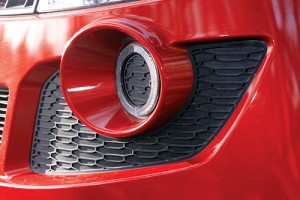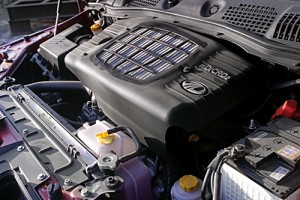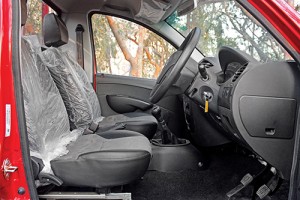Mahindra has engineered the Imperio pick-up to be a force to reckon with; in an environment that is attracting an amount of competition.
Story by:
Ashish Bhatia
Mahindra has launched the Imperio pick-up. It replaces the Genio, which could not quite set the sales chart on fire. But then, the Genio was not the only pick-up Mahindra has had to offer till date. Snatching the lead from Tata Motors, Mahindra has been exerting its presence in the pick-up segment for some time. Over the rather utilitarian looking Bolero maxitruck, the Genio looks premium. It also looks the gen next. With the stakes high, and the market not quite what it was a few years ago, the Imperio, it is certain has work cut out for itself. Its breeding, there’s little doubt, has been done to turn it into a force to reckon with.
The looks
Available in a single-cab and a twin-cab guise, it is the ‘toothed grille’ that draws attention. It along with the clear lens headlamps adds a touch of aggression. Modern looking the Imperio is. There’s also an amount of boldness build into it. A look at the power bulge on the bonnet and it is aptly clear. A dandy looking bumper below with fog lamp enclosures built into (there are no fog lamps in it) adds to the aggressive stance. It contains a large air dam with a mesh grille. Walk over, and the bold wheel arches come into view. They support 16-inch wheels and 225/75 R16 tyres. The Imperio stands higher up the ground; its ground clearance is a good 211 mm. Measuring 5280 mm in length, the single cab version that I managed to lay my hands on sported an upmarket stance. That’s the impression that I got. The rake of the pillars and the way the cabin is shaped keeps the connection with the Genio alive. The best part is the front end. Over the Genio’s rather sloppy looking front, the one that the Imperio sports is definitely more impressive and happening.
With a chassis underneath, the cab and the cargo tray are separately bolted. The cargo tray is clearly not as stylish as the cabin. And understandably, it looks dandy and fit for the job. It measures 2570 mm in length and 1745 mm in width. In case of the twin-cab version, which has a four-door cab and two rows of seats capable of seating five people, the cargo deck length is 1647 mm. Width is 1745 mm. The overall length of the twin-cab Imperio is 5180 mm. If the metallic shades the Imperio could be had in adds to its premium looks, the levels of fit and finish are in keeping with the industry standards.
Inside
Climb into the cabin and a modern looking dashboard draws attention. It does not look like a big change from that of the Genio. Subtle change abound, and there’s enough room for two in this single cab version. There’s good amount of head room and elbow room. The fabric seats are supportive. On the top-spec models the door trim includes a map pocket and a bottle holder. The dash is fairly straight forward in its layout. If the vents at the top centre would remind of those that are found in the Xylo, the dash, finished in a shade of dark grey gives the impression of being made from quality plastics. It is clearly not as jazzy, and the instrument console, consisting of a large speedometer with a digital odo in it and two small dials for fuel and temperature each, is easy to read. Below the vents on the centre console is a big slot for fitting a single-DIN stereo. The smaller slot below could be used to store some tiny bits. The HVAC controls are below and include buttons for the AC in ‘hi’ or ‘low’ mode. The glovebox can take papers, and is definitely bigger than the slot on the centre console. The lid is not lockable however. While the twin-cab top-spec version is available with a 2-DIN stereo, the tilt-ajustable steering helps to arrive at a commanding driving position. Well sorted in terms of ergonomics, the carpeted interior adds a touch of premium. Opt for a dual cab top-spec variant, and a 2-DIN stereo comes as standard. Also standard on the Imperio is an engine immobiliser.
Behind the wheel
The 75 hp, 2.5-litre engine feels peppy. First gear enables the pick-up to move away with an amount of verve. It does not take much time to understand that this ones’ dandy and made for a hard day’s work rather than spend time at the track. The engine may not be free revving, it is energetic and provides a strong thrust. The long throw gearbox ensures that gearshifts on the 5-speed box are not executed with the quickness of a sports car. The impression it had instead is more about being tough and indestructible. But, then that is what Mahindra pick-ups and utility vehicles are about. They trace their origin to the quarter-tonne truck, the Jeep. Torque and an ability to carry load takes precedence over speed. The third and fourth cogs present an ability to gather speed. The top cog is an overdrive, and aids to achieve a good balance between the ability to ferry goods at good speed while sipping diesel in an economical manner.
To ensure good fuel efficiency, the Imperio comes with a FuelSmart feature. It enables to choose the power or eco (fuel economy) mode using a switch on the dash. In the eco mode, the ECU tweaks the engine parameters to burn less fuel and elevate fuel savings. Turned on, the Imperio in the eco mode felt decisively sluggish. There was no perceptible change in noise and vibration, both of which even in the power mode are kept well within control. The Imperio, according to company sources, averages 13.5 kmpl. Top speed is 120 kmph.
In an unladen state, the ride is stiff. Load the pick-up and the ride feels more pliant. The front suspension of the Imperio is independent, and of the double wishbone type. The rear suspension of the Imperio is made up of leaf springs. A load sensing valve is claimed to help the vehicle maintain good stability. In terms of handling, the steering offers fair amount of feedback. It clearly is not the most direct or the most precise. It none the less helps the pick-up to negotiate twists and turns with confidence. Push the vehicle into turns and there’s an amount of body roll that is visible.
Aspirational value
It is clear that Mahindra is in no mood to give up without a fight. The Imperio reflects of this attitude, and is clearly a product, albeit on the commercial side of the scale, that aims to offer more bang for the buck. In a market that seems to attract the competition of global players like Isuzu India, the Imperio extends the promise of a tough CV that can ferry 1240 kg worth of cargo in the single cab guise and 1070 kg worth of cargo in the twin-cab guise. Made at the Chakan plant, the BS III single-cab Imperio costs Rs. 6.25 lakh. The twin-cab Imperio costs Rs. 7.27 lakh ex-showroom Thane.





























